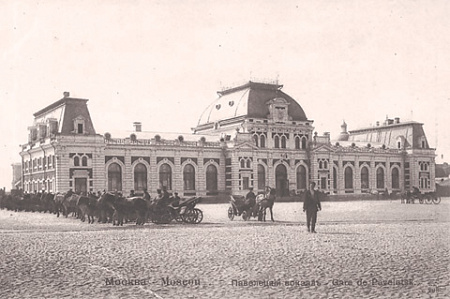
As Moscow’s Paveletsky railway station marks its 125th anniversary, a remarkable story of historical rediscovery has brought its chief architect out of the shadows. For over a century, the man who oversaw the station’s construction in 1899 was known only by his initials, V.V. Timofeev, a mere footnote in the capital’s history. Now, a chance finding has unveiled the extraordinary life of a man whose legacy extends far beyond a single Moscow landmark.
The breakthrough came unexpectedly from the autobiography of a completely different figure: the eminent Russian biologist and geneticist Nikolai Timofeev-Resovsky. In a stunning twist of historical fate, it was revealed that the enigmatic engineer of Paveletsky station was none other than the scientist’s own father, Vladimir Viktorovich Timofeev.
A nobleman born in Kyiv, Vladimir Timofeev was a man of immense talent and diverse interests. He initially studied astrophysics and mathematics at St. Petersburg University before a sense of patriotic duty compelled him to change course. Appalled by the poor state of Russia’s infrastructure, he retrained at the Institute of Railway Engineers and dedicated his life to building the transportation networks that would connect the vast empire. His work spanned thousands of miles, laying tracks in Tyumen, Pskov, and Kursk, earning him prestigious imperial orders and the civilian rank of Actual State Councillor, equivalent to a Major General in the army.
The inauguration of the railway station on September 1, 1900—originally named Saratovsky Station—must have been a moment of dual anxiety and pride for the chief engineer. While he supervised the official ceremony, his wife was expecting their first child. Just six days later, Nikolai was born, forever linking the public triumph of the new station with a profound personal milestone for the Timofeev family.
It is through Nikolai’s later recollections that the most vivid portrait of his father emerges. He described Vladimir not just as a builder, but as a pioneer who won a contract for the first railway into Siberia by exposing a massive corruption scheme. He was an innovator who mastered the art of building railways through waterless deserts, a technique that became a model for major projects in Central Asia.
The engineer’s life took an even more adventurous turn when he was invited by the British and French to consult on the North-Saharan railway in Africa. He spent three years on the continent, contributing his expertise to the line connecting Morocco to Egypt. This period also saw him become an avid big-game hunter, pursuing lions, elephants, and rhinos. His son recalled family albums filled with fascinating photographs from these African expeditions, painting a picture of a man who was as comfortable in the wild as he was on a construction site.
What began as a simple historical query into an obscure name has unraveled the rich, globe-trotting life of an astrophysicist turned nation-builder and adventurer. The story of Vladimir Timofeev is a powerful reminder that behind the stone facades of historical landmarks often lie forgotten human stories of incredible depth and complexity, waiting for a single thread to be pulled.
